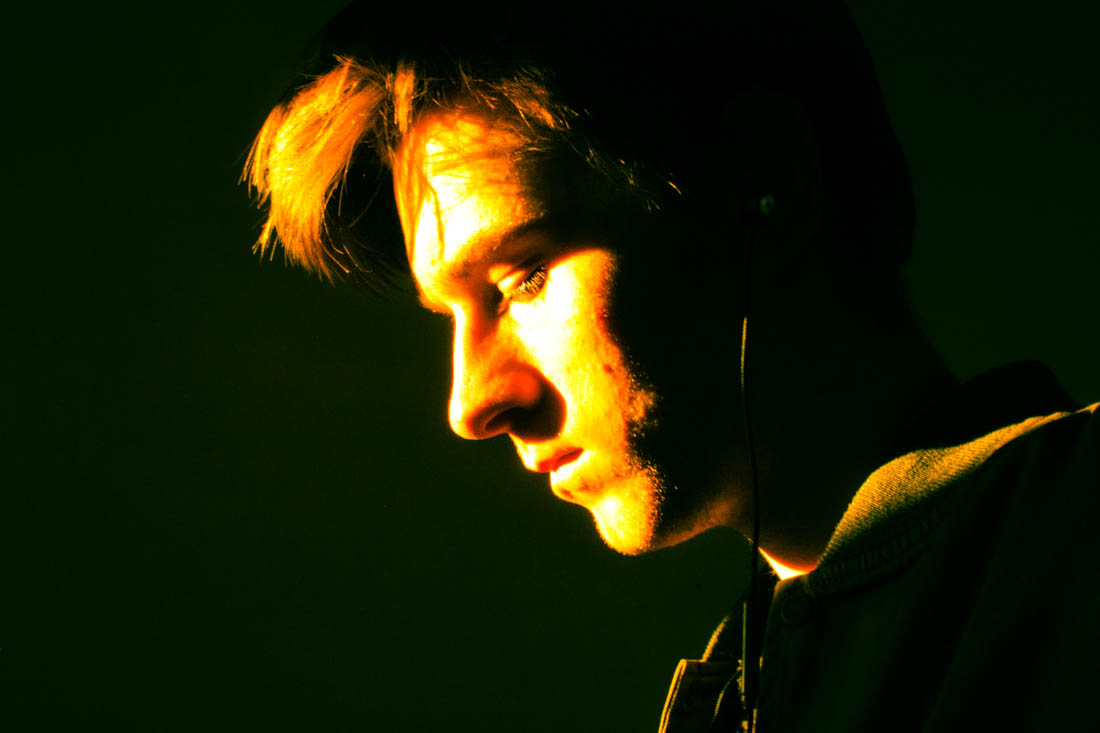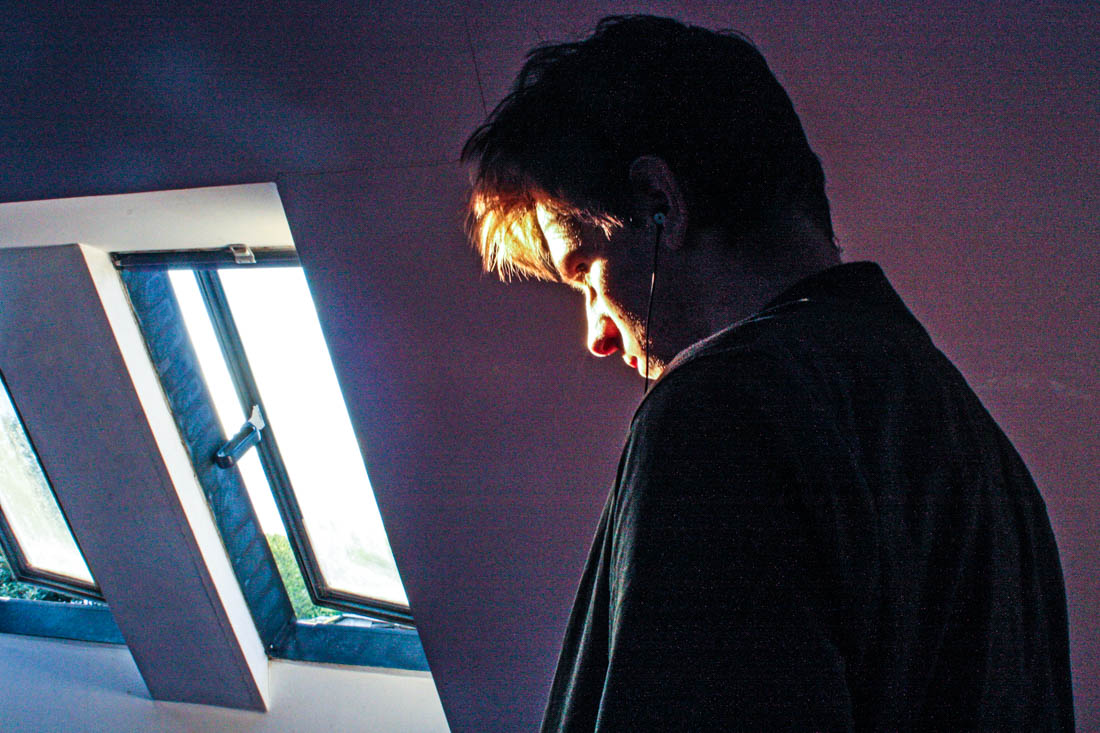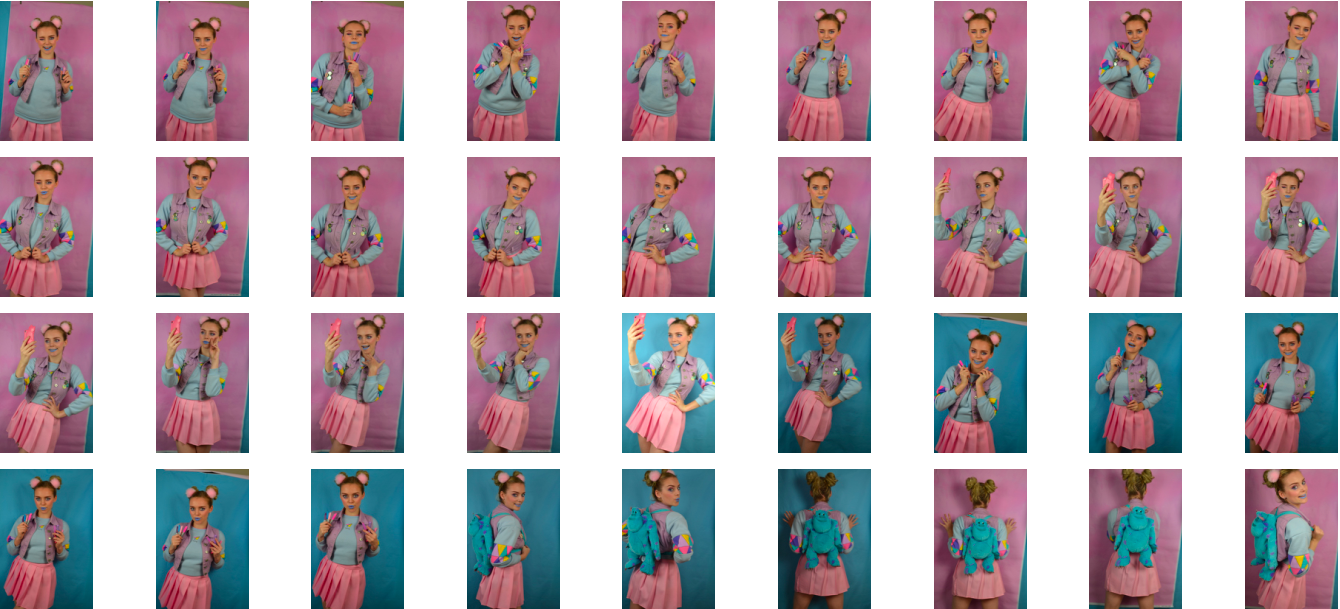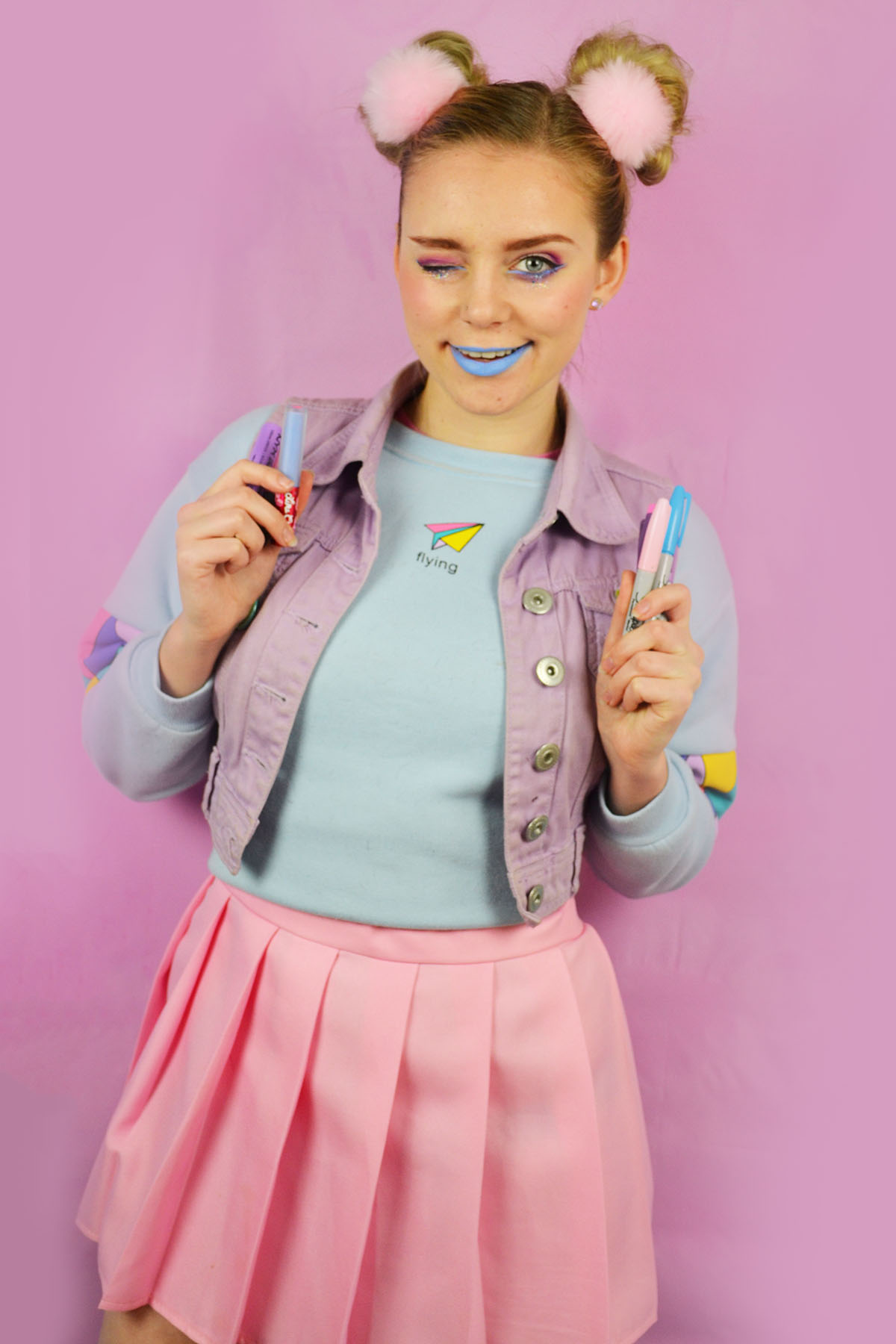Since being invited to have a insiders look of Jersey’s ‘Energy from Waste’ facility, I set out to meet with them at our arranged time. Before completing this shoot I have researched the facility located at La Collette and gathered amazing inspiration from topographic photographers Bernhard and Hilla Becher. As I explained in my planning, my main aim for this shoot was to capture the scene and show exactly what happens to Jersey’s household/commercial waste once it is thrown away. By doing this I hope to get across the message of the importance of recycling which I will back up in my next shoot depicting La Collette’s recycling centre. To complete this shoot all I needed was my camera and the safety equipment that was provided to me when I got there. Upon arriving at the location I headed up to the reception, signed myself in, and had an initial explanation of what we were doing during my tour. Fortunately, this opportunity turned out to be a great success as I was actually shown around the entire facility for 2 hours and explained exactly what happens to Jersey’s waste and how we can reuse it for energy. To take these images below I used a slightly faster shutter speed than normal, capturing as much light and detail as possible using the limited natural and artificial light. Below are some of the original unedited photographs from this shoot presented in a contact sheet… Because of my original plan to take as many photographs as possible of every aspect I was shown, the contact sheet above only shows 47 out of the 500+ images I took during my visit. To narrow down my outcomes from this selection above was quite difficult as I really liked many of the angles and compositions that I managed to capture. Below are the 14 images I have chosen as my final outcomes, although I won’t be using every image in my end result, I wanted to include them in this post for future reference to my efforts. As well as this, as requested by the manager of the energy from waste facility, Ian Williams, I have edited and saved about 16 more images to send to the department for unknown reasons. This shoot, much like my previous documentary shoots, shows a mixture of colour and black and white photographs depending on their style. Below I have displayed my final 14 outcomes along with four other images presented at the bottom that helps me to tell this documentary narrative…
Because of my original plan to take as many photographs as possible of every aspect I was shown, the contact sheet above only shows 47 out of the 500+ images I took during my visit. To narrow down my outcomes from this selection above was quite difficult as I really liked many of the angles and compositions that I managed to capture. Below are the 14 images I have chosen as my final outcomes, although I won’t be using every image in my end result, I wanted to include them in this post for future reference to my efforts. As well as this, as requested by the manager of the energy from waste facility, Ian Williams, I have edited and saved about 16 more images to send to the department for unknown reasons. This shoot, much like my previous documentary shoots, shows a mixture of colour and black and white photographs depending on their style. Below I have displayed my final 14 outcomes along with four other images presented at the bottom that helps me to tell this documentary narrative…
 This first group of my final outcomes above depicts the waste before transformation, the burning of the waste, and the ashy result of the process. The first two images on the top row depict the difference between the amount of household and commercial waste produced on our Island. The image on the left presents an average sized machine transporting commercial rubbish from one spot to another whereas the image on the right shows a gigantic claw machine, capable of moving up to 3 tonnes of household waste. For use in my project, I love the photograph on the right because of it dramatic intensity as well as its ability to give my viewers an idea of how much we produce. This image is one of my favourites overall and was taken through one of the ‘rubbish shoots’ after the operator kindly positioned the claw for me. The two pieces on the bottom row can show what could be seen of the burning process alongside with the final outcome of this waste. I love the orange glow and intriguing composition/aperture of the image on the right whereas the one on the left shows an important part of what happens to Jersey’s un-recycled waste. – this ash is actually re-purposed to be used in Jersey and England to create buildings and roads.
This first group of my final outcomes above depicts the waste before transformation, the burning of the waste, and the ashy result of the process. The first two images on the top row depict the difference between the amount of household and commercial waste produced on our Island. The image on the left presents an average sized machine transporting commercial rubbish from one spot to another whereas the image on the right shows a gigantic claw machine, capable of moving up to 3 tonnes of household waste. For use in my project, I love the photograph on the right because of it dramatic intensity as well as its ability to give my viewers an idea of how much we produce. This image is one of my favourites overall and was taken through one of the ‘rubbish shoots’ after the operator kindly positioned the claw for me. The two pieces on the bottom row can show what could be seen of the burning process alongside with the final outcome of this waste. I love the orange glow and intriguing composition/aperture of the image on the right whereas the one on the left shows an important part of what happens to Jersey’s un-recycled waste. – this ash is actually re-purposed to be used in Jersey and England to create buildings and roads.
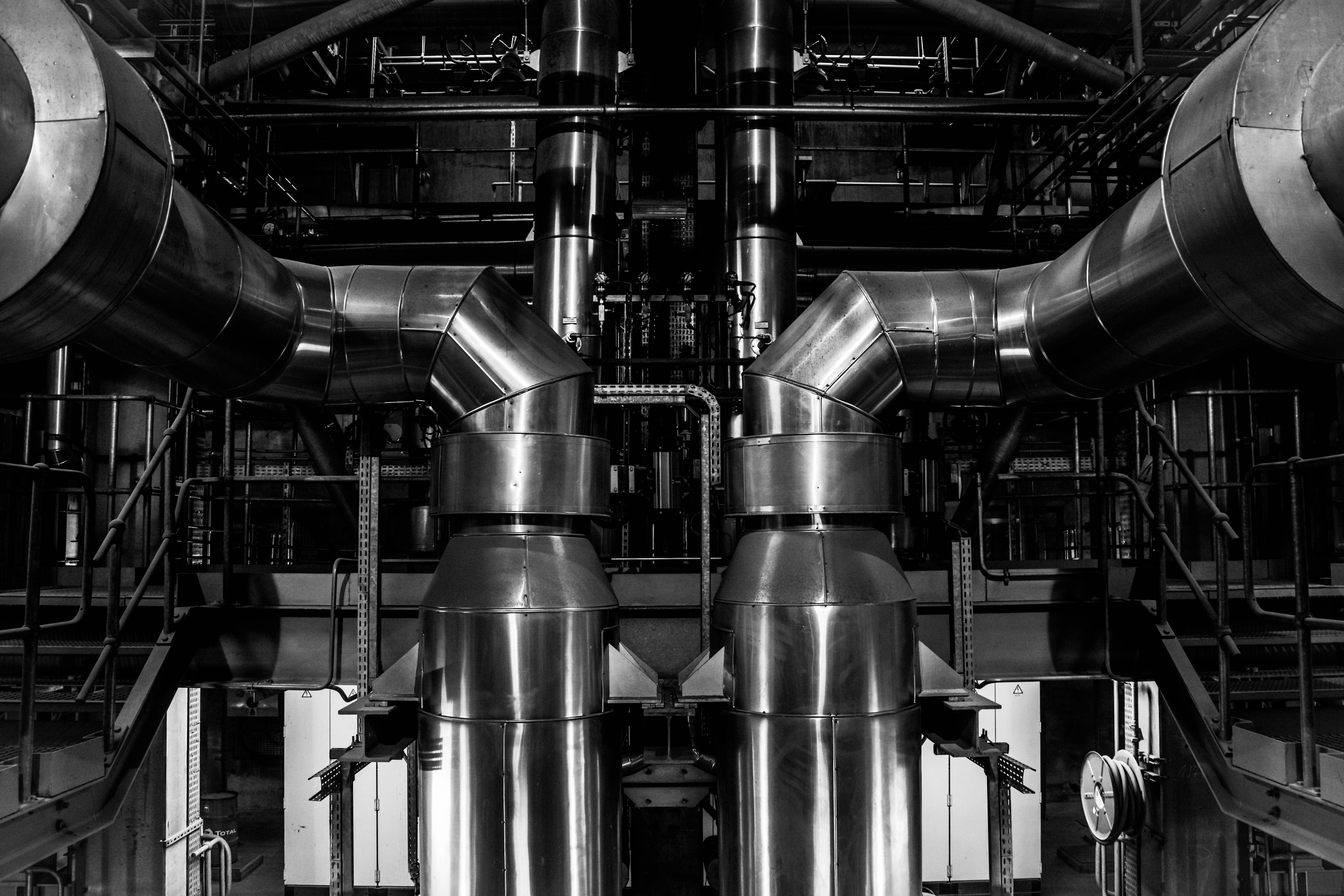 This next image is one of my favourite topographic style outcomes which was taken from inside the ‘Energy from Waste’ facility during my tour. This image depicts two massive pipes coming up from a lower floor and curling around the edge of my composition. I love the perfect symmetry I have captured in this piece and the topographic/straightforward style it was taken in. The reason I have decided to edit this image in black and white is to emphasise it dynamic features as well as resemble the many blast furnaces captured by my inspirations Bernhard and Hilla Becher. The meaning behind this image is to show a specific section of the massive machinery that combined, works to process the safe disposal of our island’s waste and turn it to clean energy.
This next image is one of my favourite topographic style outcomes which was taken from inside the ‘Energy from Waste’ facility during my tour. This image depicts two massive pipes coming up from a lower floor and curling around the edge of my composition. I love the perfect symmetry I have captured in this piece and the topographic/straightforward style it was taken in. The reason I have decided to edit this image in black and white is to emphasise it dynamic features as well as resemble the many blast furnaces captured by my inspirations Bernhard and Hilla Becher. The meaning behind this image is to show a specific section of the massive machinery that combined, works to process the safe disposal of our island’s waste and turn it to clean energy.

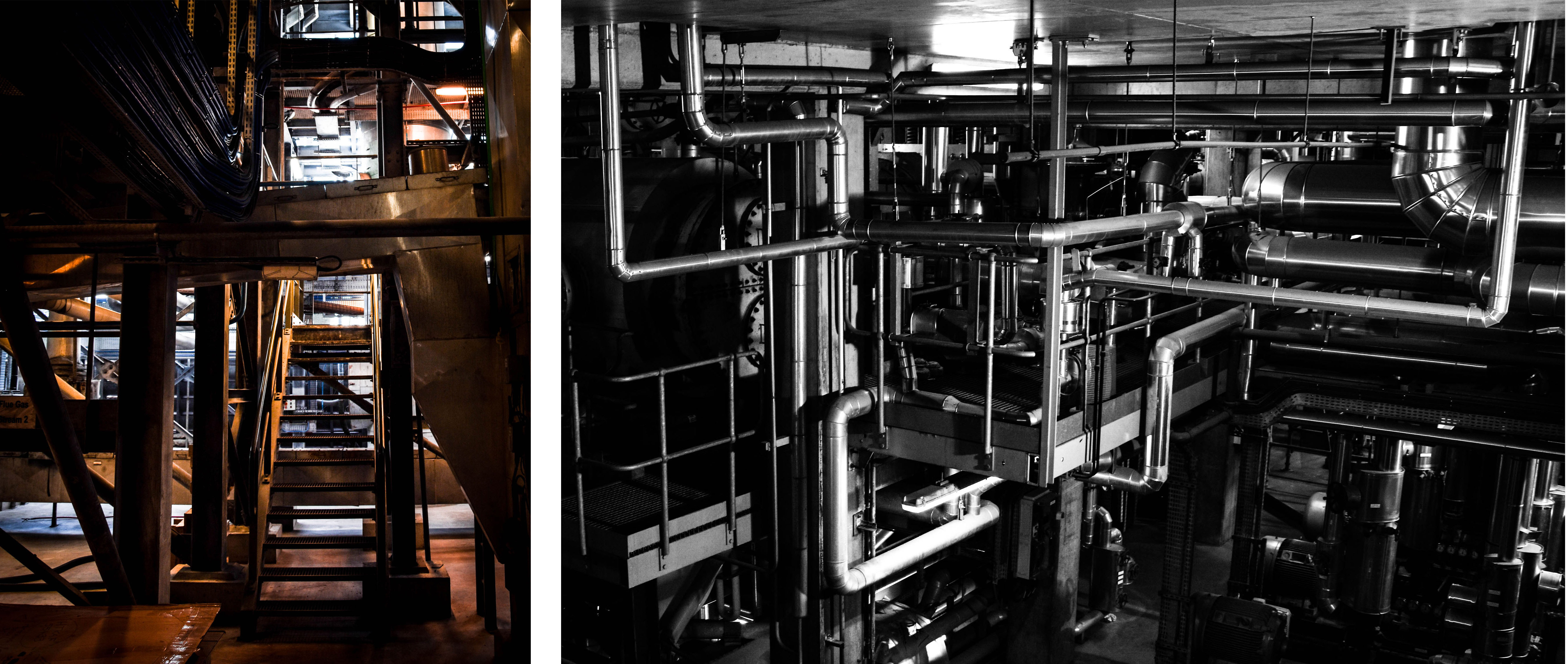 These next group of final outcomes from my shoot show more specific details from inside the ‘Energy from Waste’ facility. The meaning behind these images, along with the final outcome above, is to show exactly how much work and complicated technology goes into this process. These images can give an idea of just how difficult it is to cleanly produce only 7% of our island’s energy at the same time as disposing of our waste. The first and largest image on the top left is my favourite from this and depicts a scene through the building completely filled with pipes and machinery. I love the high contrast and dramatic overtones of this image and I think the intricacy of the pipe work really helps prove my point. The next two images on the right of this piece depict a few close-up detailed shots of specific parts of this extensive setup. I love the simplicity of these images as I feel they share a very strong topographic style. Lastly, the two photographs on the bottom row depict some amazing shadows and angels looking through the facility as well as more intricate pipe work hanging down from the ceiling.
These next group of final outcomes from my shoot show more specific details from inside the ‘Energy from Waste’ facility. The meaning behind these images, along with the final outcome above, is to show exactly how much work and complicated technology goes into this process. These images can give an idea of just how difficult it is to cleanly produce only 7% of our island’s energy at the same time as disposing of our waste. The first and largest image on the top left is my favourite from this and depicts a scene through the building completely filled with pipes and machinery. I love the high contrast and dramatic overtones of this image and I think the intricacy of the pipe work really helps prove my point. The next two images on the right of this piece depict a few close-up detailed shots of specific parts of this extensive setup. I love the simplicity of these images as I feel they share a very strong topographic style. Lastly, the two photographs on the bottom row depict some amazing shadows and angels looking through the facility as well as more intricate pipe work hanging down from the ceiling.
 Next are some important outcomes depicting a few of the elements that go into the purification of the smoke produced from burning the rubbish. According to CSBC, the La Colette ‘Energy to Waste’ facility meets the highest air quality standards in the whole of Europe. If their emission levels are outside of the licensed limits the plant is shut down and any underlying problem is rectified before the plant is started up again. The fist three images on the left depict some features that help keep track and purify the smoke before it is released. First is the point where samples are taken for testing, next on the top is a monitor for viewing the levels of each element and finally, the bottom image shows a very small part of the machine that acts as a filter. Lastly, on the right of this contact sheet is the view from outside the window looking up at the JEC chimney and the pipes that connect the two facilities.
Next are some important outcomes depicting a few of the elements that go into the purification of the smoke produced from burning the rubbish. According to CSBC, the La Colette ‘Energy to Waste’ facility meets the highest air quality standards in the whole of Europe. If their emission levels are outside of the licensed limits the plant is shut down and any underlying problem is rectified before the plant is started up again. The fist three images on the left depict some features that help keep track and purify the smoke before it is released. First is the point where samples are taken for testing, next on the top is a monitor for viewing the levels of each element and finally, the bottom image shows a very small part of the machine that acts as a filter. Lastly, on the right of this contact sheet is the view from outside the window looking up at the JEC chimney and the pipes that connect the two facilities.
Lastly are some images I have taken that are not intended to contribute to my topographic photography style like the images above. Instead, I have chosen to add them to my blog simply to give a little more insight into how the facility actually works. The first two photographs on the left depict the building releasing steam from the perspective over the top of Mount Bingham. I have included these images to present the clean white steam that is let out of their small chimney which has just been through a system of turbines to create energy. The black and white image situated in the middle of the contact sheet represents how we still have a long way to go before beating the use of fossil fuels and powering the whole island cleanly. The last two images on the right are just quick snapshots of some of the tables and graphs the operators use to carefully monitor the waste disposal emissions and make sure they are under the licenced limit. By looking closely at this information we can start to understand just what types of chemicals are released from the burning of waste and exactly how much is being pumped into the atmosphere. 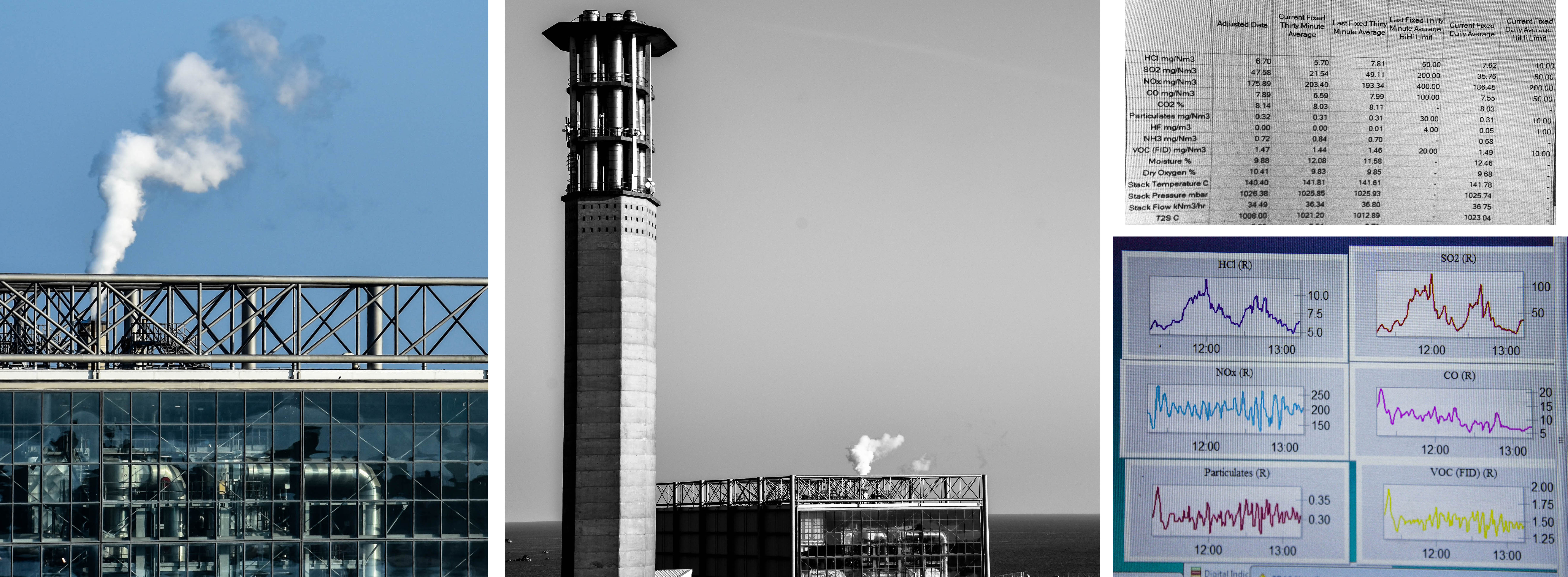








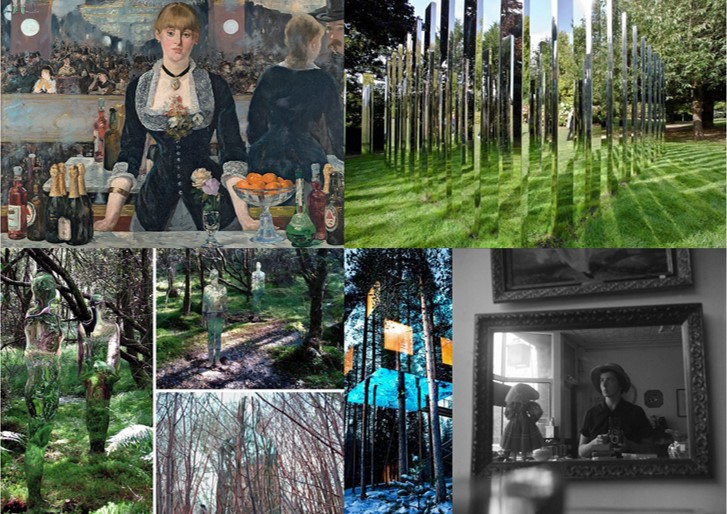




























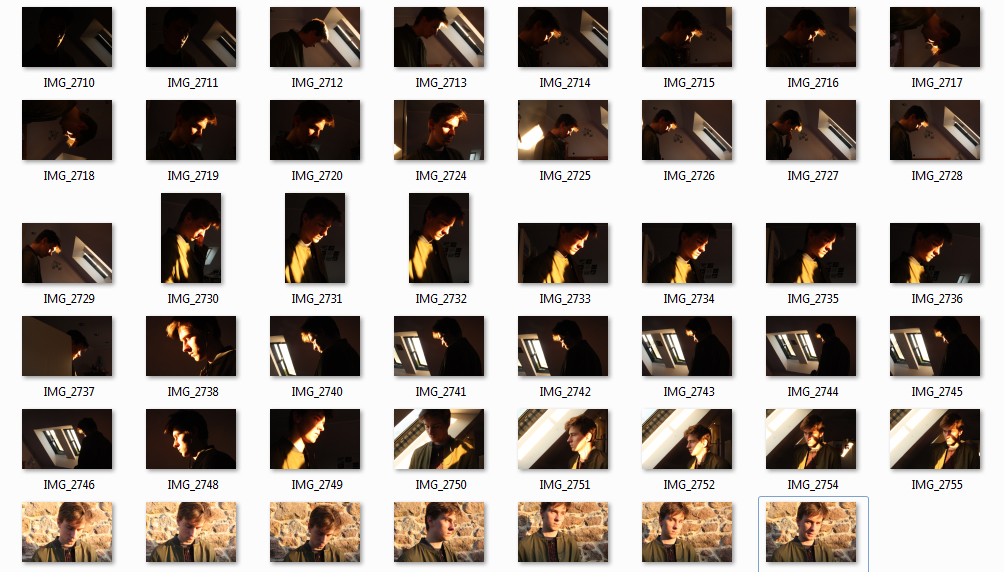 In response to Bill Henson and Todd Hido’s portraits, I wanted to explore the use of interior scenes and the use of natural lighting to build narrative and add emotion and feeling. In relation to my starting point, the natural light contrasts the dark spaces created by the walls and small light sources. I took over 50 photographs, each experimenting with different ISO’s and exposures and I also left it on auto focus, this evoked a sense of depth without creating overly blurry photographs, I also tested long exposures to give the photos a ghostly effect. I did not use a tripod and in hindsight this would have been more beneficial for creating a sharper image especially when working with longer exposures. I decided to not use multiple exposures or HDR techniques unlike many of my previous landscape photographs as I wanted to keep the strong contrasts of dark space with the warm light. The composition of the photographs features closeups as well as shots that feature more of the open space which reflects a bigger sense of environment. I have also made the compositions to work with a book layout so they could possibly work with a double page spread but also just on a single page, complimented with a text on the opposite side.
In response to Bill Henson and Todd Hido’s portraits, I wanted to explore the use of interior scenes and the use of natural lighting to build narrative and add emotion and feeling. In relation to my starting point, the natural light contrasts the dark spaces created by the walls and small light sources. I took over 50 photographs, each experimenting with different ISO’s and exposures and I also left it on auto focus, this evoked a sense of depth without creating overly blurry photographs, I also tested long exposures to give the photos a ghostly effect. I did not use a tripod and in hindsight this would have been more beneficial for creating a sharper image especially when working with longer exposures. I decided to not use multiple exposures or HDR techniques unlike many of my previous landscape photographs as I wanted to keep the strong contrasts of dark space with the warm light. The composition of the photographs features closeups as well as shots that feature more of the open space which reflects a bigger sense of environment. I have also made the compositions to work with a book layout so they could possibly work with a double page spread but also just on a single page, complimented with a text on the opposite side.






